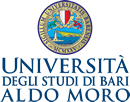Cryo-SEM observations and imaging of minute lesser sclerotized insects
DOI:
https://doi.org/10.15162/0425-1016/448Parole chiave:
electron microscopy, anatomy, gross & fine morphologyAbstract
The study of minute cuticular details of small delicate insects is possible by slide mounting of the entire exoskeleton or part of it. This technique requires whole insect body clearing or tissue bleaching and washing. Lesser sclerotized insect body greatly suffers for such treatments and looses its natural body shape by shrinkage or by flattening, consequently. The aim of this study is to suggest an effective, fast and cheap technique to image less sclerotized insects that are prone to shrink or to wrinkle their bodies because of desiccation. Actual availability of desktop Cryo- SEM (Hitachi TM 3000 series) suggested us to experiment the opportunity to preserve natural body shape of the minute, delicate and lesser sclerotized insects in their living attitude. The technique bases on freezing the specimen, either living or previously EtOH-preserved but moved in water for the preparation, in the water down to -40°C on the SEM Cryo-stage and setting it for observation in SEM vacuum chamber. Once in the vacuum a proper T°C increase at about -28/-22°C allows external ice sublimation and exposes the frozen insect to direct SEM imaging. The technique appears promising because of the overall quality of results, the resolving power, the opportunity to measure the specimens. In fact, delicate specimens as Phylloxera ilicis Grassi (Hemiptera: Phylloxeridae, a representative of Phylloxera quercus Boyer de Fonscolombe group), the Italian grape mealybugs Planococcus ficus (Signoret) (Hemiptera: Pseudococcidae) and Drosophila suzukii (Matsumura) (Diptera: Drosophilidae) maggots that are all usually ruined by desiccation during direct SEM observation, beautifully retain their natural body shape by this technique allowing the study and imaging of external morphology. As a further advantage, there is no need to critical point drying or metal coating, and the same sample can be submitted to conventional slide mounting later, after being studied by Cryo-SEM. Finally, we present a table of the running time/cost per observation of the proposed technique.







